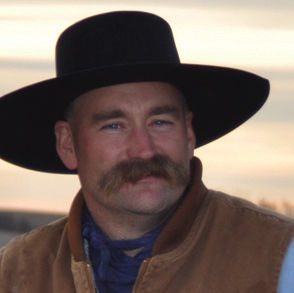Again this Christmas I marvel at all of the similarities between the birth of Jesus and farm life. From the sheep to the stable to the shepherds, it really sounds like just another day at the Loos Ranch. Well, except the part where three wise men showing up handing out jewels.
One day after Christmas while checking our cows on the stalks, this beautiful black cow was standing there looking at me with a big snow ring around her muzzle. It hit me again how everything in life can be explained with animal agriculture.
You see the actual temperature at the time was only 2 degrees above zero, and 6 inches of light fluffy snow had fallen in the past couple of days. Every one of the cows was out in the corn stalks foraging through the snow looking for their food. Not a one of them was lying at the water tank, waiting for someone to bring them a morsel. They were working for their food.
While foraging for food to satisfy her own hunger, the cow is also improving the planet and the stalk field where she grazes. The University of Nebraska-Lincoln recently released new information about just how beneficial that cow is to grazing this corn stalk field. While most people drive by a harvested corn field and think that nothing of value is left, the cow sees its real potential. Here is a very interesting bit of information about what a corn field produces in addition to the actual corn.
About 45 percent to 50 percent of the aboveground biomass produced by the corn plant is stover (residue). For each bushel of dry corn produced, about 41 pounds of residue is also produced. Corn production of 150 bushels per acre produces about 3 tons per acre of residue; a yield of 200 bushels per acre produces a little over 4 tons of residue. Of this residue about 40 percent (16 pounds per bushel) is leaf and husk, which is highly digestible and a good source of cattle feed.
Cattle are selective grazers and will eat any grain remaining first (reducing the likelihood of volunteer corn), followed by the husk and leaf.
University of Nebraska-Lincoln recommendations for determining stocking are based on 50 percent utilization of the leaf and husk (8 pounds per bushel) or about 20 percent of the residue. Some additional residue would disappear by trampling and other factors such as wind loss. For most cornfields in Nebraska, there would be no increased risk of erosion if 40 percent to 50 percent of the corn residue was removed. Grazing at the stocking densities properly will leave plenty of soil cover.
Grazing corn residues can benefit both cattle and crop producers. Corn residue should be viewed as an economical source of winter roughage for cattle that can provide an extra source of income from corn production that does not affect next year’s crop production.
To me the Christmas story of Jesus’s birth is all about using the available resources; finding a purpose for all things real in our life. We are so fortunate to live in rural America and be in charge of all of those resources that improve human lives every single day. That too is why Jesus was sent to us. While his primary mission is to improve our eternal lives, unquestionably he has proven those who follow him live a higher quality life on earth as well.
It sure would be a lot easier on days like Christmas if we did not have livestock to tend to and we could just sit around with family and friends in our warm homes. We would not be fighting frozen waterers and water lines, chasing cows freed by a downed electric fence or trudging through the snow to pick eggs, but the reality is that by engaging in caring for those God given resources, we are much more like a cow. We go out and forage (work) to provide our own way and because of what we do, someone’s life is better.
Yes, there is no doubt that all of us should aspire to be more like that cow in 2018. Happy Moo Year!
Editor’s note: Trent Loos is a sixth generation United States farmer, host of the daily radio show, Loos Tales, and founder of Faces of Agriculture, a non-profit organization putting the human element back into the production of food. Get more information at www.LoosTales.com, or email Trent at [email protected].
